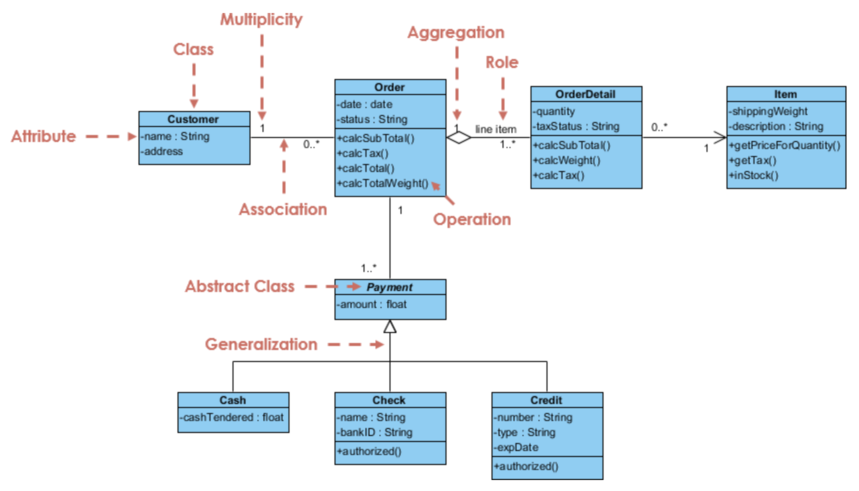Intermediate Python – Part 2#
Thierry Géraud 2024

explicit_typing: bool = True # do it, it saves lives!
Quick reminder#
Test: write a Python program that input a number of lines and stores the strings in an appropriate structure
such as:
*
***
or:
*
***
*****
what was the main point of this exercise?
we want an algorithm (so a … … . .) such as:
input n # numbner of lines
for each line
print a series of spaces ' ' (how many?)
print a series of stars '*' (how many?)
an output has been created
print is for debugging purpose; afterwards, we will store…
a way to print—or store?—is:
from sys import stdout # explain...
sys.stdout.write(char) # "std::cout <<" in C++
# "System.out.print" in Java
a skeleton of code for the exercise here...
from sys import stdout
def pyramid_print(n):
spc = 0 # first number of spaces, depending on 'n'
lenx = 0 # first number of stars; first means on the 1st line
for i in range(0, n): # for each line
for j in range(0, spc):
sys.stdout.write(' ') # start with space(s)
for j in range(0, lenx):
sys.stdout.write('*') # then write star(s)
sys.stdout.write('\n')
# changes for the next line:
spc -= 0
lenx += 0 # to deal with the next iteration
sys.stdout.flush() # flush the *buffer* stdout
pyramid_print(3) # just a test
replace zeros!
now we want something like:
from FIXME import FIXME
def pyramid_string_list(n: int) -> List[str]:
out: List[str] = []
# cut
return out
print(''.join(pyramid_string_list(3)))
spot the two major differences with the 1st version, and discuss them (pros/cons)
last we want the simplest code:
def pyramid_string(n: int) -> str:
assert n > 0 # run-time test (dev mode); no error handling (release)
s: str = ''
# cut
return s
and finally an actual program:
# cut
if __name__ == '__main__':
n = int(input(''))
print(pyramid_string(n))
why is it a program, not just a script?
Another exercise (not mandatory, but highly recommanded if you feel not so self-confident with the 1st one): now the output is
* * *
* *
* * *
or:
* * * * *
* *
* *
* *
* * * * *
and the input ‘n’ shall be odd
your feedback: are you OK with all the notions involved in this exercise?
a program = data types and algorithms (functions)
Illustration:
# a data type
@dataclass # a useful "decorator" to know
class University:
name: str = None
location: str = None
# an algorithm, dedicated on objects being a University
def relocalize(u: University):
if u.location == "Kremlin-Bicetre":
u.location = "Grand Paris"
With object-orientation:
a program = a set of types (and their relationships)
a type = data + algorithms on these data
Illustration:
we want rooms and doors
thanks to the types Room and Door
note the use of the plural/singular -> explanation?
a room has a number (data)
a room can be equiped with a new door (algorithm)
in object-orientation, a class has attributes and methods:
description-level |
instance-level |
meaning |
|---|---|---|
class |
object |
an entity (*) |
attributes |
data |
its state |
methods (properties) |
routines |
its behavior |
the two following objects live independently:
d11 = Door(11) # creates a new Door -> "constructs" a Door
d12 = Door(12) # constructs another Door -> a new memory slot
d12.close() # we want 'd12' to be closed
and they can be “part of” a “larger” object:
r1 = Room(number = 1) # we have a new room
r1.doors.append(d11) # a room have doors
r1.open() # a room can be opened
# cut
for d in r1.doors:
print(d.number) # we can print this room door numbers
all these objects, some of them interacting with each other, make a program run / evolve
Excerpt from the previous slide:
# we have a new room
# a room have doors
# a room can be opened
# we can print a room door number
what does that mean? what is the translation into Python?
they can be "part of" a "larger" object
is this programming?
Hint: if it is programming, then programming is … .
(discussion)
“a room have doors” means:
any room have doors
every rooms have doors
the class ‘Room’ has an attribute ‘doors’
“a room can be opened” means:
any/every room/s can be opened
the class ‘Room’ has a method ‘open’ (action vs reading data)
In
r1.doors
# cut
print(d.number)
we access some data of the room ‘r1’ and of the door ‘d’
In
r1.open()
we call an algorithm (piece of code / subroutine) on the room ‘r1’
we say that ‘r1’ is the target of this call / target = subject = recipient
it reads: “r1, do open” -> execute this action (data can be modified) / this is an explicit message (we do not know the internals) / a program is doing things
r1.doors
# cut
print(d.number)
so we have
‘doors’ being a (public) attribute of the class ‘Room’
‘number’ being a (public) attribute of the class ‘Door’
“(public)” means that we can directly access to data -> not a good idea, see later…
r1.open()
so
‘open’ is a (public) method of the class ‘Room’ = we can open a room
we express that objects can do things / we can do things on objects
“object, do that” => my program evolves — things are done
‘r1.open()’ = “r1, do open” => we give/write instructions
a program is a set of instructions, but their are not linear, just like for a script
so
the accessibility is public
meaning we can use it: access some data (attribute) / run an algorithm (method)
in the cas of methods, without knowing some internal details
that can be a very desirable property
note that accessing to raw data (attribute) and modify them can be risky
control what is done with data would be better…
What is Object-Orientation (OO)?#
object-orientation features:
objects / sometimes with classes
data abstraction / encapsulation
inclusion polymorphim / inheritance
dynamic dispatch / message passing
open recursion
an object-oriented program looks like:

(does that look like a script?)
Exercise: read the following class
class Door:
"""a very simple Door class"""
def __init__(self, number: int, opened: bool = True):
self.number = number
self.opened = opened
def open(self):
self.opened = True
and this sample use:
dd = [Door(i) for i in range(10)] # list comprehension
for d in dd:
d.open()
Live step-by-step explanations:
FIXME
now we want to log when a door is opened so we write:
class Door:
# cut
def open(self):
self.opened = True
print(self, "is opened")
def __str__(self):
return "door " + str(self.number)
Explanations…
Reminders:
with object-orientation:
a program = a set of types (and their relationships)
a type = data + algorithms on these data
in object-orientation, a class has attributes and methods:
description-level |
instance-level |
meaning |
|---|---|---|
class |
object |
an entity |
attributes |
data |
its state |
methods (properties) |
(sub)routines |
its behavior |
Encapsulation in OO is: grouping attributes and methods
(we will see that it is also related with information hidding…)
Live exercice:
let us define (right now) all together what can be a room
so write a ‘Room’ class
Class hierarchies / Inheritance / inclusion polymorphism#
this section is just about types are “organized” and about typing a set of types
dogs and cats are animals
Animal is a superset of Dog – we say that Animal is a superclass of Dog
Cat is a subset of Animal – we say that Cat is a subclass of Animal
(live drawing…)
the “is-a” relationship is called generalization
Animal generalizes the notions of Cat’s and Dog’s
every animals can make sounds, so we define a method for that:
class Animal:
def make_sound(self):
pass # meaning: do nothing
‘self’ (1st argument) designates the animal (object) that ‘make_sound’
to call of this method:
a.make_sound() # here 'self' is 'a' / actually not passed as an argument
‘a’ is not an argument in this method call; it is the target
so in:
class Animal:
def make_sound(self):
pass # meaning: do nothing
‘self’ designates the target
class Dog(Animal): # maps: a dog is an animal
def make_sound(self): # the method implementation for dogs
print("bark")
class Cat(Animal): # maps: a cat is an animal
def make_sound(self): # the method implementation for cats
print("meow")
a = [Dog(), Cat()] # a list of animals (dogs and cats are animals)
for e in a:
e.make_sound() # gives: bark meow
we have several implementations for ‘make_sound’ in different classes
when calling ‘make_sound’, a particular implementation is selected and run
a[0].make_sound()
a[1].make_sound()
‘a[0]’ is a dog (*) so the method ‘make_sound’ of ‘Dog’ is called ‘a[1]’ is a cat so the method ‘make_sound’ of ‘Cat’ is called
$~~~~~~~~~~~~~~~~~~~~$ (*) meaning, an instance of the class Dog / an object with type Dog
aa: Animal = a[0] # first element of our list of animals
print(id(aa) == id(a[0])) # gives: True
we have:
‘aa’ designates ‘a[0]’
it is a reference, not a copy
just like in
a: int = 1 # we expect an integer, and we get 1; correct b = a # 'b' is a reference to 'a'
‘a[0]’ is a ‘Dog’
‘aa’ is a variable of type ‘Animal’
this initialization is: we expect an animal, and we get a dog
so this is correct
aa.make_sound() # a method is called on this object
we have:
‘aa’ is a variable of type ‘Animal’
we call the ‘make_sound’ method on this (instance of) ‘Animal’
yet we know that the exact type of ‘aa’ is actually ‘Dog’
the implementation of ‘make_sound’ that is called is the one of ‘Dog’
static type: the one of the variable dynamic type: the one of the object
when calling a method, the selected implementation is the one defined in the class of the target object…
…even though a superclass
now we want both attributes and methods:
we keep the ‘make_sound’ method
an attribute can be the animal name
every data shall be initialized (good practice)
a special method is defined to construct objects
the constructor is named
__init__
class Animal:
def make_sound(self):
pass # meaning: do nothing
class Dog(Animal): # a dog is an animal
def __init__(self, name: str = ""): # a constructor (special method)
self.name = name # (declares and) initializes an attribute
def make_sound(self): # a method
print(self.name, "bark") # access to the attribute 'name'
def test(self):
self.make_sound() # just to illustrate "open recursion"
sample use:
d1 = Dog("Buddy")
d2 = Dog("Fluffy")
d1.make_sound() # 'self' is 'd1' in this call
d2.make_sound()
print(d1.name == d2.name) # gives: False
each object has its own attribute
we do likewise for Cat
we then have:
make_sound for all animals
a name for every dogs, and a name for every cats
that is redundant code (which is bad)
why not having a name for name for every animals
so for dogs, cats, and upcoming new animal classes
let’s equip the Animal class:
class Animal:
def __init__(self, name: str = ""): # constructor
self.name = name # attribute
def make_sound(self) -> None: # polymorphic method
pass
def run(self) -> None: # new method, available for all animals
print("now running")
so we can now write:
d = Dog()
print(d.name) # a dog has a name
d.run() # a dog can run
we say that ‘name’ and ‘run’ are inherited (from the super class Animal)
class Animal:
def __init__(self, name: str = ""):
self.name = name # attribute for each Animal
# cut
class Dog(Animal): # a dog is an animal
def __init__(self, name: str = "", n_bones: int = 0):
super().__init__(name) # calls the Animal constructor
self.n_bones: int = n_bones # Dog has an extra attribute
def make_sound(self) -> None: # the method implementation for dogs
print(self, "bark")
Dog has two attributes:
‘name’, inherited from the class Animal
‘n_bones’, declared in the class Dog
class Animal:
# cut
def run(self) -> None:
print("now running")
class Dog(Animal): # a dog is an animal
def __init__(self, name: str = "", n_bones: int = 0):
super().__init__(name) # calls the Animal constructor
self.n_bones: int = n_bones # Dog has an extra attribute
def make_sound(self) -> None: # the method implementation for dogs
print(self, "bark")
Dog has two methods:
‘run’, inherited from the class Animal
‘make_sound’, defined in the class Dog
plus its constructor
there is a difference between
a “regular” attribute:
one per object
‘d1.name’ and ‘d2.name’ are two distinct data
a class attribute (or class variable)
one for the class
shared by all objects
class Animal:
numbers: int = 0 # class attribute/variable
def __init__(self, name: str = ""):
self.name = name # object attribute
Animal.numbers += 1
# cut
sample use:
d = [Dog(), Dog(), Cat()]
print(Animal.numbers) # gives: 3
